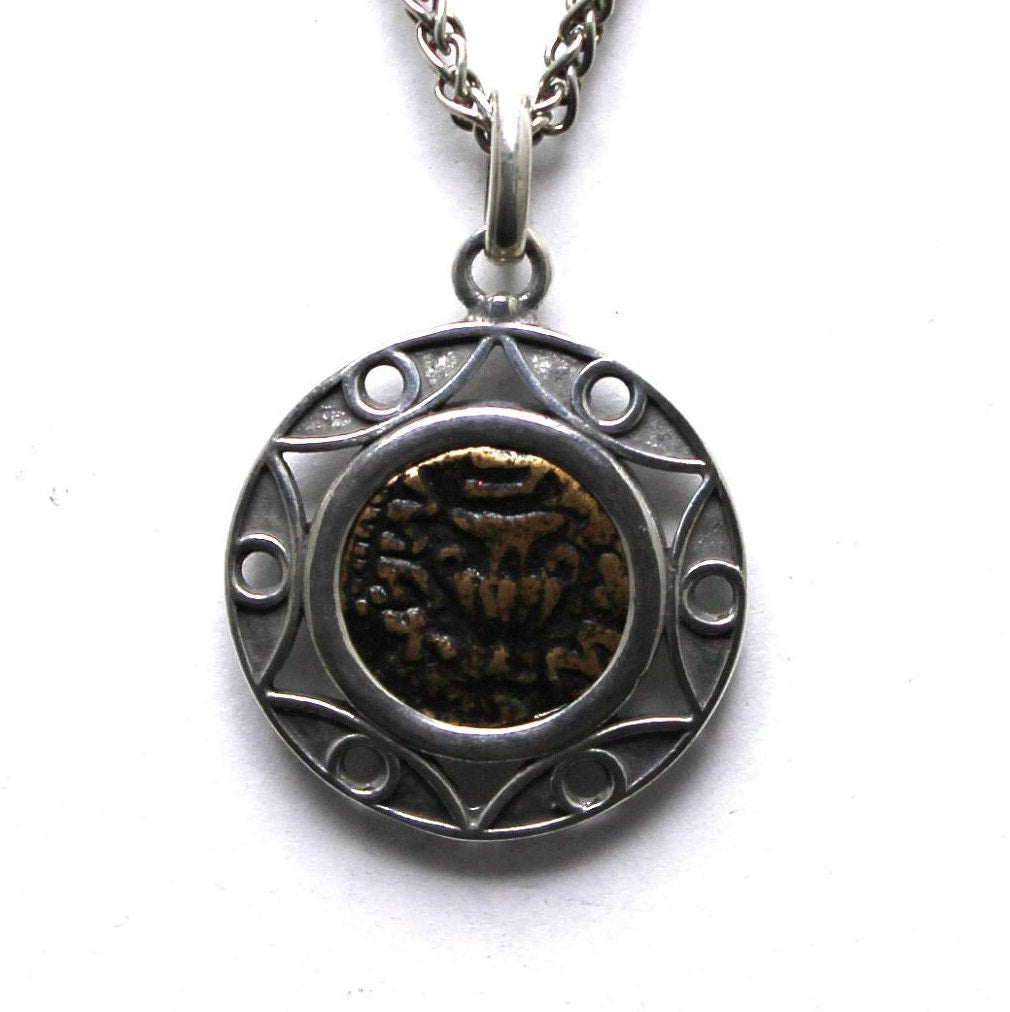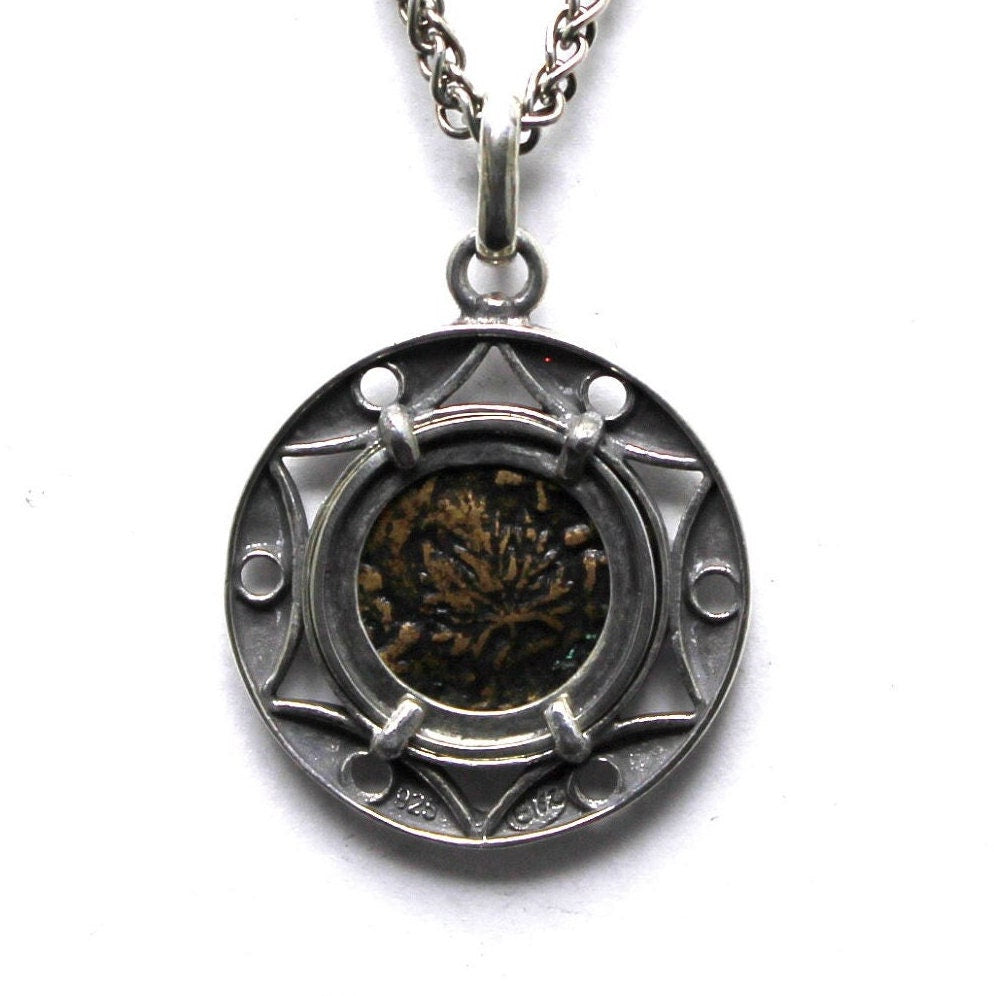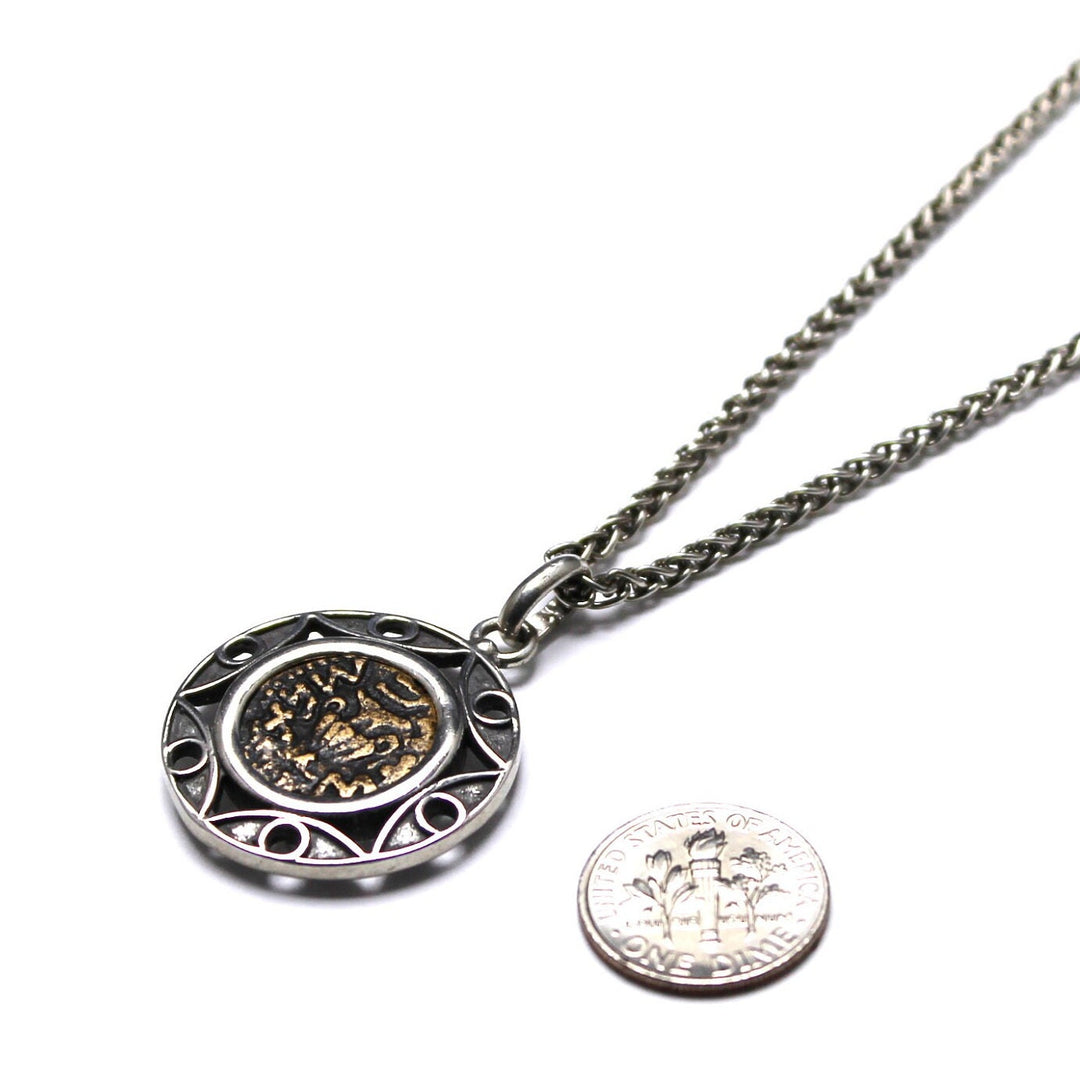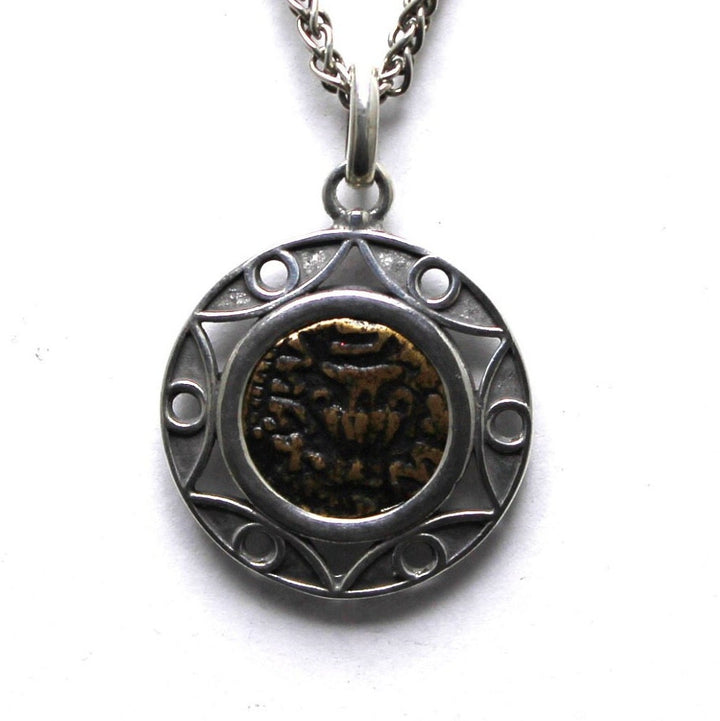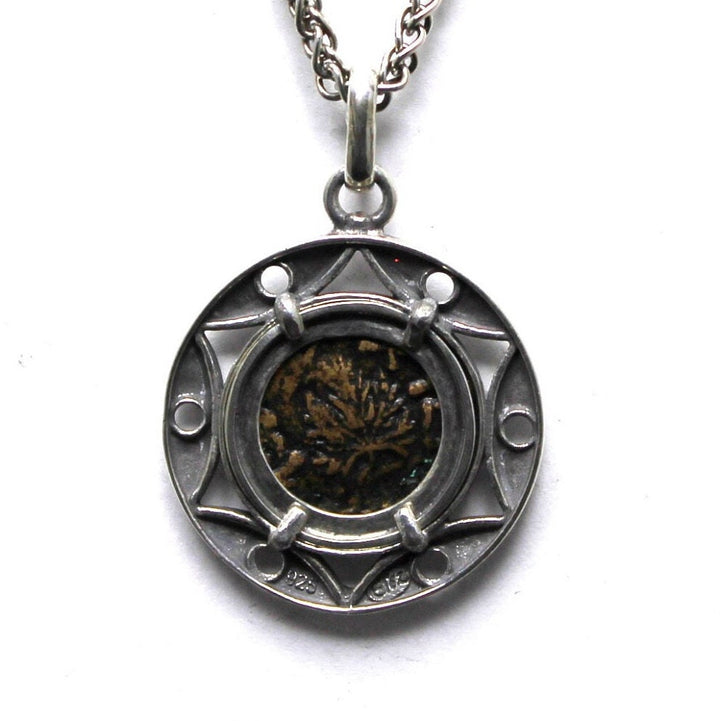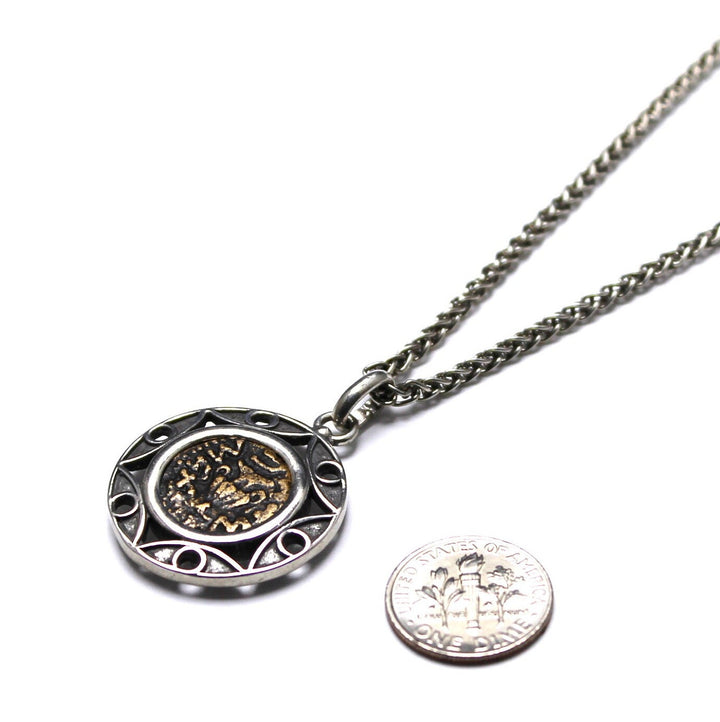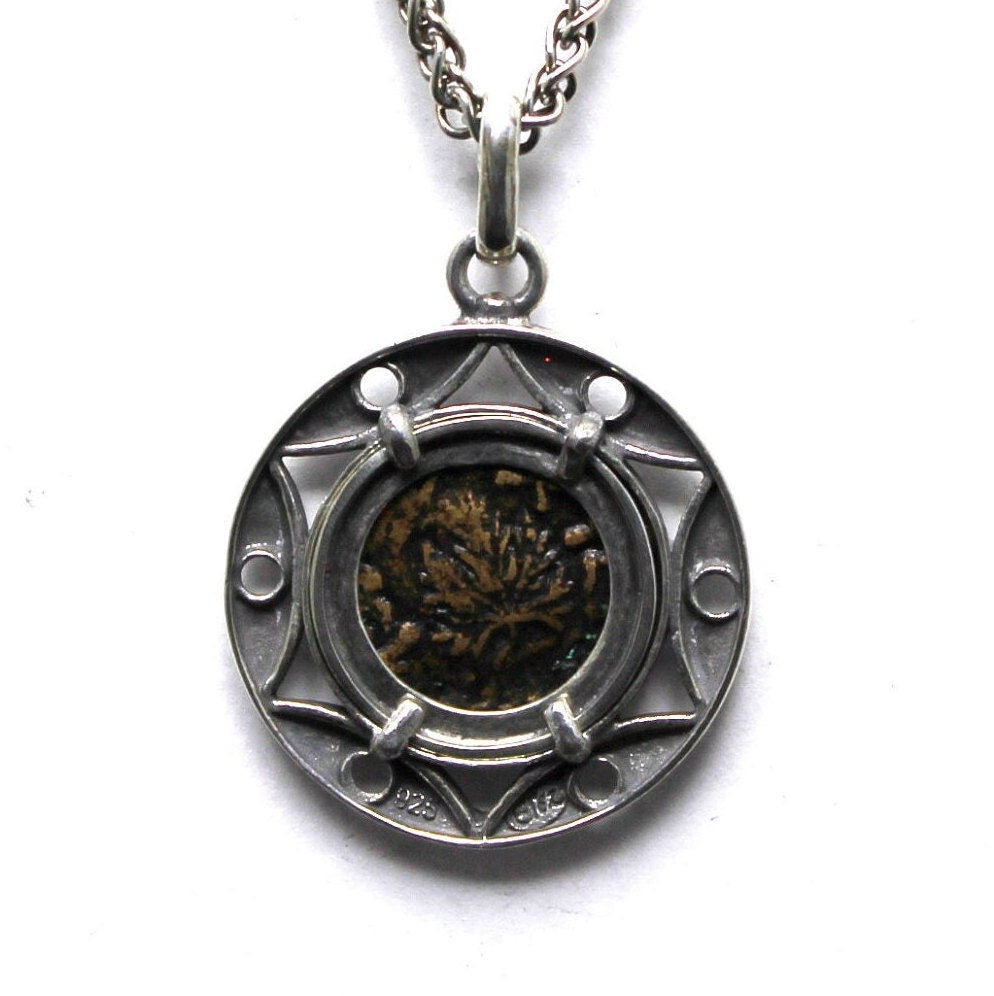Sterling Silver Pendant, Jewish First Revolt, Ancient Prutah Coin, 7181
- Low stock - 1 item left
- Inventory on the way
Chain has 2 inch extension
Info on the coins:
Denomination: Prutah Date: 67-8 CE
Description: Judaea, First Revolt, AE 19mm Prutah. Year 2 = 67-8 CE. Hebrew legend "Shenath Shethaim" (Year Two) around amphora with wide rim and two handles / Hebrew legend "Cheruth Zion" (Freedom of Zion) around vine leaf with small branch and tendril. (SEE MORE HISTORY BELOW)
Advantages: This pendant is a unisex piece. The piece could appeal to anyone from a student to a history buff, to people that love antiques, to anyone who appreciates beauty and historic events. This neckless makes for a great conversation piece as well as a meaningful gift.
The vessels on coins of the Jewish revolt are not copies of the Roman amphorae used for the Roman libations of wine poured out before idols but a symbol of the sacred libations of wine made in the Temple. The amphora: three kinds of liquids were used in the temple: water, oil and wine. Water and wine were used for libation. Oil was used for the meal offering, in bread eaten by the priests and for lighting. The purest oil was reserved for the menorah. At the time of the First Jewish Revolt, the menorah was considered too scared to depict on coins. The Amphora depicted may be the vessel that held the oil menorah.
The grapes, grape vines and wine were an important part of the ancient economy and ritual. Grapes were brought to the temple as offerings of the first-fruits and wine was offered upon the altar. The vine and grapes decorated the sacred vessels in the sanctuary and a golden vine with clusters of grapes stood at its entrance.
The First Jewish Revolt was triggered in 66 by a massacre of Jews and the desecration of the synagogue in Caesarea. The Romans distracted the Civil Wars following the death of Nero were unable to put a speedy end to the revolt. The end came on 4 August 70, when Titus, son of the new Emperor Vespasian, captured and sacked Jerusalem and destroyed the holy temple. The Jewish fast of Tisha B'Av morns the Fall of Jerusalem annually on this date.
These coins were minted during the rebellious Jewish War against Rome in 67-68 C.E., only during the second and third year of the rebellion. The coins of the Jewish war were a significant expression of the Jews freedom from Rome.




